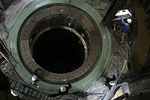 Washington Post: The world is, understandably, focused on the Middle East. The map of the region — drawn a century ago by European powers to reflect imperial interests rather than ethnic realities — is unraveling. The Washington Post
Washington Post: The world is, understandably, focused on the Middle East. The map of the region — drawn a century ago by European powers to reflect imperial interests rather than ethnic realities — is unraveling. The Washington Post
By Michael Oren
 The world is, understandably, focused on the Middle East. The map of the region — drawn a century ago by European powers to reflect imperial interests rather than ethnic realities — is unraveling. Syrians and Iraqis are being massacred, and Jordan is flooded with the half-million who have fled. Turkey, a formidable power, also struggles to meet the challenges of refugees and terrorist attacks. Russia, meanwhile, seems bent on supplying Syrian President Bashar al-Assad with deadly weapons such as the S-300 anti-aircraft system. This will enable Assad to enforce a no-fly zone over all of Syria and even parts of neighboring countries.
The world is, understandably, focused on the Middle East. The map of the region — drawn a century ago by European powers to reflect imperial interests rather than ethnic realities — is unraveling. Syrians and Iraqis are being massacred, and Jordan is flooded with the half-million who have fled. Turkey, a formidable power, also struggles to meet the challenges of refugees and terrorist attacks. Russia, meanwhile, seems bent on supplying Syrian President Bashar al-Assad with deadly weapons such as the S-300 anti-aircraft system. This will enable Assad to enforce a no-fly zone over all of Syria and even parts of neighboring countries.
Given such seismic activity, it is easy to overlook the most explosive development of all. For the Iranian regime, the situation in the Middle East is a convenient distraction. As world leaders deliberate whether and how to intervene in Syria, how to grapple with Iraq, how to shore up Jordan and Turkey, and how to engage the Russians, the Iranian nuclear program advances unchecked.
While the Middle East roils, the Iranians have amassed some 182 kilograms of uranium enriched to a level easily enhanced to weapons grade. This stockpile stops short of the red line drawn by Israeli Prime Minister Benjamin Netanyahu, but the Iranians are quietly preparing to cross it.
The media is focusing on Middle East atrocities; meanwhile, the Iranians have installed 16,000 centrifuges — an immense number by any standard — most of which are spinning. Iran is introducing 3,000 advanced centrifuges that will at least triple its enrichment rate and more than double its total output. According to an International Atomic Energy Agency (IAEA) report published this week, the Iranians have already installed 689 of these centrifuges, which will shorten the time they will need to reach weapons capacity to several months and maybe even weeks. And we may not be able to see this happening. Iran is also building additional nuclear plants that, like the formerly covert facility at Fordow, will be heavily fortified and possibly beyond the reach of IAEA inspectors. On April 8, Iran celebrated its “national nuclear technology day” by opening a new underground uranium processing site — just two days after participating in talks designed to end the country’s military nuclear program.
Those discussions, conducted with the five permanent members of the U.N. Security Council plus Germany, were also overshadowed by crises in the Middle East. Virtually overlooked was the year-long diplomacy that produced nothing but a hardening of Iran’s position. Although sanctions led by President Obama and Congress continue to cut into Iran’s economy and undermine its currency, the nuclear program progresses. Iranian rulers believe that they are paying a high price but will eventually achieve their nuclear aspirations. They are not yet convinced that the prize will be denied them by military action.
Still, the ayatollahs are taking no chances and trying to protect their nuclear assets. Iran has collaborated with Assad to supply Hezbollah with precision-guided missiles. If successful, the terrorists could target Israeli jets, vital installations and population centers. The goal is to deter Israel from defending itself against an imminent Iranian nuclear threat designed to wipe us off the map.
But Israel will not remain passive. We will prevent these sophisticated missiles from reaching Hezbollah. We will closely monitor the movement of chemical and other game-changing weapons in Syria. Together with the United States, we will develop more advanced anti-ballistic systems. Yet we can never lose sight of the ultimate threat.
If Iran gets the bomb, so too will a number of Middle Eastern states that can pose not only regional chemical but also global nuclear threats. An Iran with military nuclear capabilities will dominate the Persian Gulf and its vast oil deposits, driving oil prices to extortionary highs. And Iran can transfer nuclear weapons to terrorists who can launch them at foreign ports in shipping containers. The entire world will be endangered.
The images emerging from the Middle East, though agonizing, must not camouflage Iran’s nuclear designs. These, we still believe, may yet be thwarted by a combination of escalating sanctions and a credible military threat. Iranian rulers must not only hear about the policy of all options on the table, they must fear it. Iranian nuclear installations may make for bland photographs, especially when compared with the region’s lurid scenes, but they foreshadow a cataclysmic picture.
Michael Oren is Israel’s ambassador to the United States.


